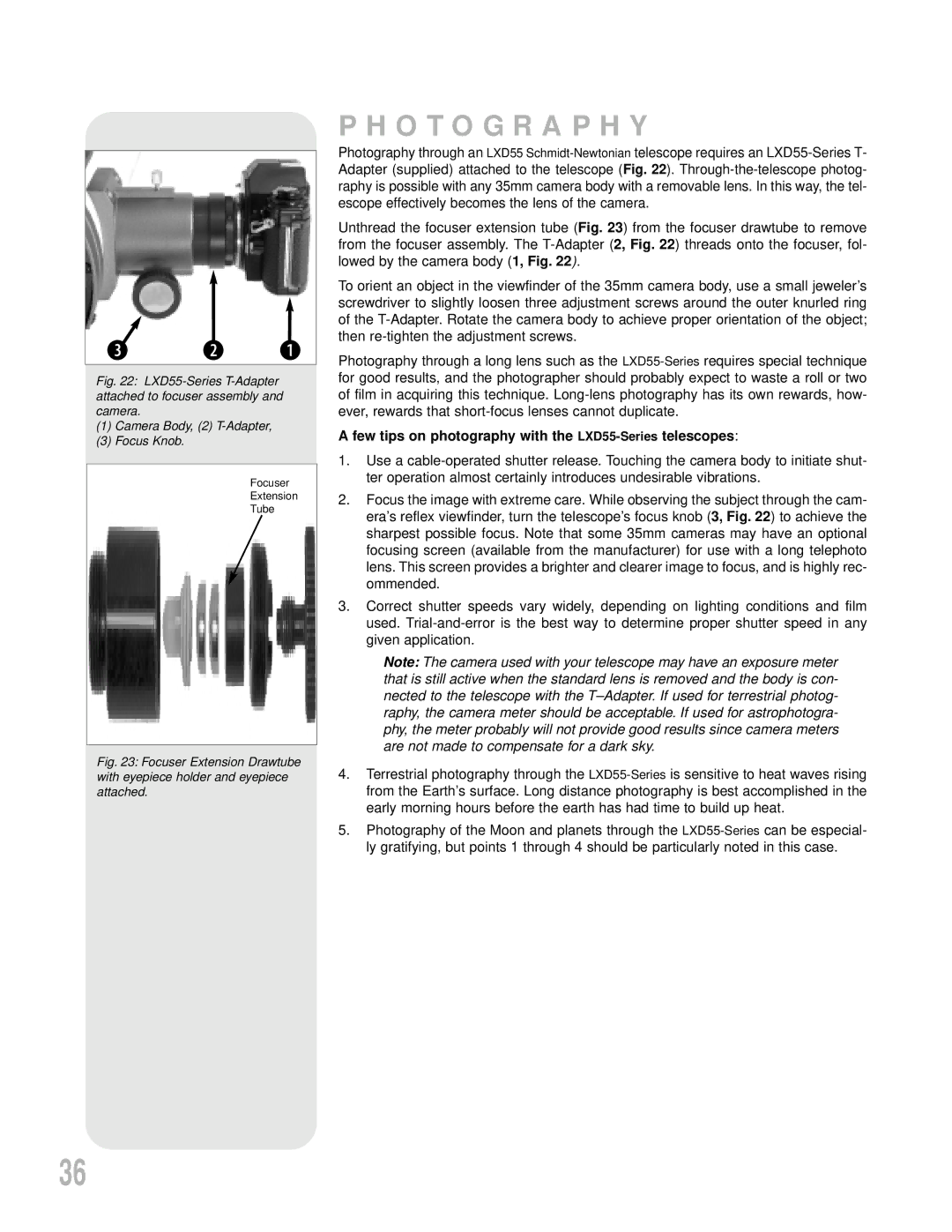
d C B
Fig. 22: LXD55-Series T-Adapter attached to focuser assembly and camera.
(1)Camera Body, (2) T-Adapter,
(3)Focus Knob.
Focuser
Extension
Tube
Fig. 23: Focuser Extension Drawtube with eyepiece holder and eyepiece attached.
PHOTOGRAPHY
Photography through an LXD55
Unthread the focuser extension tube (Fig. 23) from the focuser drawtube to remove from the focuser assembly. The
To orient an object in the viewfinder of the 35mm camera body, use a small jeweler’s screwdriver to slightly loosen three adjustment screws around the outer knurled ring of the
Photography through a long lens such as the
A few tips on photography with the LXD55-Series telescopes:
1.Use a
2.Focus the image with extreme care. While observing the subject through the cam- era’s reflex viewfinder, turn the telescope’s focus knob (3, Fig. 22) to achieve the sharpest possible focus. Note that some 35mm cameras may have an optional focusing screen (available from the manufacturer) for use with a long telephoto lens. This screen provides a brighter and clearer image to focus, and is highly rec- ommended.
3.Correct shutter speeds vary widely, depending on lighting conditions and film used.
Note: The camera used with your telescope may have an exposure meter that is still active when the standard lens is removed and the body is con- nected to the telescope with the
4.Terrestrial photography through the
5.Photography of the Moon and planets through the
36
